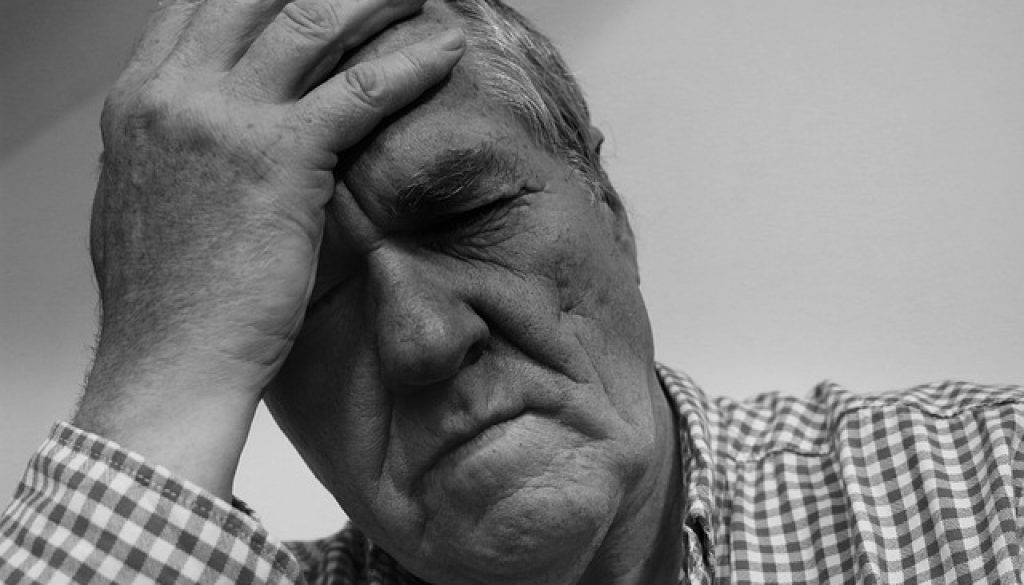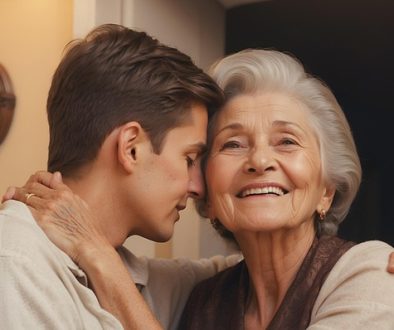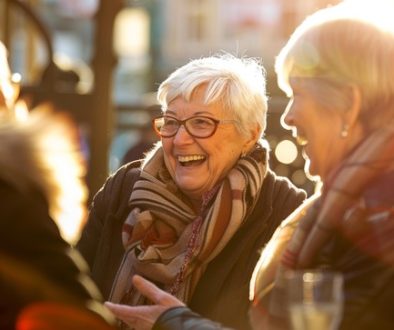Spotting the Signs of Elder Abuse: Let’s Protect Our Aging Loved Ones
Very few things could make my blood boil more than elder abuse. In nearly three decades as a life-care planner, I’ve seen more than I care to share. It’s not always as obvious as it may seem, and it doesn’t always occur at the hands of strangers behind closed doors. So let’s protect our elder loved ones by recognizing these signs of elder abuse.
As our loved ones age, they naturally become more vulnerable to various forms of abuse and neglect. They may not be strong or cognitively aware enough to defend themselves. This vulnerability makes it essential for care partners, family members and friends to be vigilant in recognizing the common calling cards of elder abuse.
Unfortunately, these ugly types of abuse are more prevalent than many realize: more than 10% of older people in the U.S. experiences some form of abuse. Sadly, only an estimated 1 in 24 cases are reported to authorities, according to the National Council on Aging.
Understanding the Signs of Elder Abuse: It’s More Than Meets the Eye
Elder abuse can manifest in various forms including physical, emotional, sexual, neglect and financial exploitation. Let’s explore these in detail to recognize the warning signs to keep our elder loved ones safe.
1. Physical Abuse: It’s Not Just Bruises
Physical abuse involves inflicting bodily harm by hitting, beating, pushing, scratching or burning. Here are some telltale signs:
- Unexplained bruises or wounds: These can appear on any part of the body, but are often hidden by clothing.
- Bruises in various stages of healing: This suggests ongoing or repeated abuse.
- Signs of restraint: Look for marks on wrists or ankles.
But don’t be fooled. Physical elder abuse can be sneakier than that. Less obvious forms include the inappropriate use of medications to sedate or harm the individual, as well as confining them against their will.
Your loved one may appear unusually drowsy or frequently asleep, or they may show signs of trauma such as rocking back and forth. If they’re afraid or cognitively unable to verbally communicate, they may resort to physical gesturing and other non-verbal communication methods. It’s as if they’re sending out an S.O.S. that only a sharp-eyed detective — like you — can decode.
2. Neglect: The Most Common, Yet Still Overlooked
Neglect is the most common type of elder abuse. It occurs when a care partner fails to meet their basic needs. These can include medical, social, emotional and/or psychological factors. Signs of elder neglect can include:
- Poor hygiene, dirty clothes, or a generally unkempt appearance: Your loved one is now looking unclean and disheveled.
- Bedsores or pressure sores: Indicating prolonged periods without being moved and cared for properly.
- Unsanitary living conditions: If their home looks like it’s been through a tornado, something’s wrong.
Other signs of neglect can include malnutrition, dehydration, unexplained weight loss, and missed medical appointments or medications. When neglected, our loved ones may feel forgotten, so we must try extra hard as compassionate care partners to provide the attention and care they deserve.
3. Emotional Abuse: The Invisible Wounds
Emotional abuse encompasses behaviors that cause psychological harm, including humiliation, intimidation and verbal assaults. Unlike physical abuse, the signs can be much harder to spot:
- Withdrawal from social interactions or activities they once enjoyed: Suddenly, your loved one prefers solitude over spending time with others.
- Unexplained changes in mood or behavior: Tearfulness, irritability or agitation can be red flags.
- Expressions of fear or anxiety around certain individuals: If Grandma’s suddenly afraid of the night nurse, something’s off.
Less obvious forms of emotional abuse can include ignoring the individual, isolating them from friends or family, or forbidding them from participating in social activities. This form of elder abuse is like turning their life into a lonely island, and we need to build a rescue boat.
4. Sexual Abuse: The Unspeakable Harm
Sexual abuse involves any non-consensual sexual act or behavior. Warning signs can include:
- Bruises or wounds on the breasts, inner thighs or genital areas: These can be obvious, but not always visible.
- Unexplained sexually transmitted infections or injuries: These should raise immediate alarms.
In addition to physical signs, other forms of sexual abuse can include forcing the elder to watch pornographic material or sex acts or making them undress against their will. It’s the stuff of nightmares, and we must stay vigilant to protect our loved ones.
5. Financial Exploitation: The Silent Theft
Financial exploitation involves the unauthorized use or theft of an aging individual’s money, property or assets. Signs of financial exploitation can include:
- Unexplained withdrawals or transfers from bank accounts: Money seems to vanish into thin air.
- Missing valuables or property: Items that should be there are suddenly gone.
- Sudden changes in legal/financial documents: New wills, powers of attorney or other financial and legal documents that weren’t there before.
Less obvious forms of financial abuse can include deceiving an elder loved one to donate money to fake charities. They may also be susceptible to fraudulent investments and scams. The world today is the con artist’s playground, and we must shut it down.
What to Do If You Suspect Elder Abuse
Now that we’ve uncovered some common signs of elder abuse, it’s time to address what to do about it. As mentioned earlier, only 4% of suspected elder abuse cases actually get reported.
Don’t let that happen – or keep happening – to your loved one!
If you suspect that your loved one is experiencing abuse, it’s crucial to take immediate action for their safety and well-being. To honor our aging family and friends, we must not only take time to notice if they’re in danger, but more importantly act and advocate on their behalf.
Here are some steps to follow:
1. Talk to Your Loved One: Be the Trusted Confidant
Have a private conversation with the individual to express your concerns. Let them know that you care about their well-being and that you are there to support them. Ask open-ended questions to encourage them to share their experiences and feelings.
Be gentle, but persistent — it’s a delicate balance, but your empathy can open doors.
2. Document Your Observations: The Detective’s Notebook
Keep a detailed record of any signs or incidents of abuse you observe. Include dates, times, descriptions of the signs, and any conversations you have with your loved one or other individuals involved.
This documentation will be crucial if you need to escalate the issue – perhaps in a court of law. Which segues nicely to our next point.
3. Report the Abuse: Sound the Alarm
Depending on the severity of the abuse, you may need to contact local authorities, such as Adult Protective Services (APS) or law enforcement. Provide them with your documentation and any additional information they may need to investigate the situation.
Remember, you’re their advocate. Don’t hesitate to take action when your gut says to!
4. Seek Professional Help: Call in the Cavalry
But if you need clarity before taking action, consult with health care professionals, social workers, Board-certified Patient Advocates (like myself) and/or elder law attorneys to get guidance on the best course of action. They can provide valuable resources and support to help protect your loved one.
Sometimes, it takes a village to ensure safety.
5. Get Them to Safety: The Final Rescue
If the abuser is a caregiver or someone living with the elder, it may be necessary to remove the abuser from the home or relocate the elder to a safer environment. Elder abuse doesn’t always occur in nursing homes, assisted living facilities and other professional offices. Sometimes it takes place in what we think is “safe and comfortable” home.
Work with professionals to develop a safety plan that ensures the individual’s well-being. It’s a tough decision, but their safety comes first.
Final Thoughts on Detecting & Preventing Elder Abuse
Elder abuse is a serious and often hidden issue that requires our vigilance and commitment to addressing as dedicated care partners. By recognizing the signs and taking prompt action, we can protect our loved ones and ensure they live with the dignity and respect they deserve.
It’s our responsibility to act when we suspect abuse. Let’s be the guardians they need, the voices they can rely on, and the heroes who won’t let abuse go unnoticed. Our loved ones deserve nothing less.
If you need guidance, reach out to me here.




